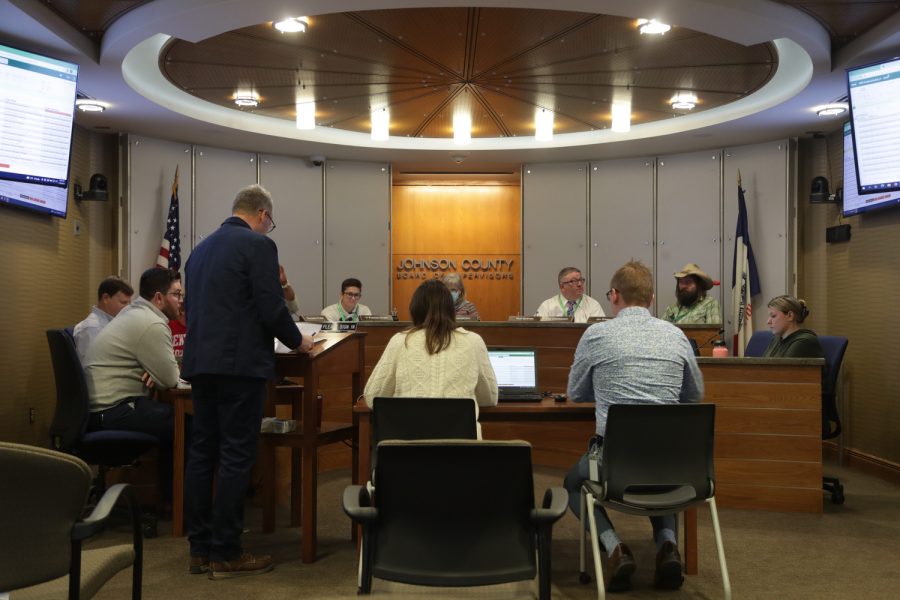Johnson County General Assistance program provides over $970,000 in financial assistance
The amount was presented during the county supervisors’ work session meeting, which also detailed that approximately 800 households have used the program thus far.
The Johnson County Board of Supervisors listen to speakers during a Board of Superviors meeting in the Johnson County Administration Building in Iowa City.
March 22, 2023
The General Assistance program from Johnson County has seen an increase of over 200 users since its last program update on Nov. 30, 2022, with 797 households receiving assistance through the program as of Feb. 28.
The presentation, given during the Board of Supervisors weekly work session meeting Wednesday, was a quarterly update on the program from county Social Services Director Lynette Jacoby. In her last update, 556 households had used the program through fiscal 2023.
According to the county website, the General Assistance program offers short-term assistance to county residents in extreme financial crisis. The assistance covers items such as rent, utilities, provisions, and more.
Jacoby said at the November presentation there was an increase in households using the service, leading to a higher amount of money from the county being used for the program. Additionally, Jacoby said the county extended $588,180 in assistance, which has now increased to $978,140.
“Since July 1 of this fiscal year, we’ve allocated $970,000 through February,” Jacoby said. “We’ve now exceeded a million dollars for the current fiscal year, and we’re on track to spend roughly $1.4 to $1.5 million dollars for this fiscal year on rent alone.”
RELATED: General Assistance Program from Johnson County sees big increase in users
The current amount tracks with an estimate Jacoby made in November 2022, speculating that the county would extend approximately $1.5 million in assistance through fiscal 2023. This amount would be over budget for the county since it had only budgeted $1 million for the program.
The high amount comes after the county changed eligibility rules, which has led to more people applying. Jacoby said this included many more single-family households applying for assistance.
“We are seeing a lot of individual single-family households that have been accessing assistance because of the social security aspect that sort of offset one another, so we had more singles households that were eligible for the program,” she said.
During the presentation in November, there were discussions on scaling back the program, which could include changing eligibility rules. Vice Chair Rod Sullivan said he was against scaling back and instead wanted to maintain the current level of service, even if it means “cutting back” on other poverty-related programs.
“…I think there’s probably a lot of arguments saying the most effective is putting money in people’s hands,” Sullivan said. “I realized this doesn’t technically go into their hands, but we’re paying for that. And I think that’s probably the most effective thing you can do.”
He added that he was fine with tweaking the program but maintained his desire to keep the program as is.
In agreement was Chair Lisa Green-Douglass, who also said she wanted the program to stay as is.
“For me, I think the two biggies are the number of assists per year, and I would like to have that still be more than what it was, and I would like the amount per persist to not go back to where it was,” she said.



